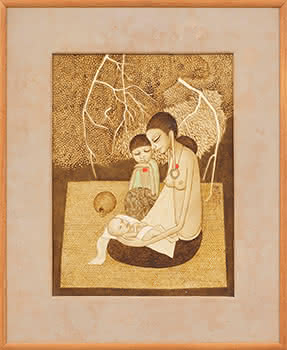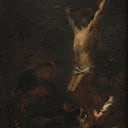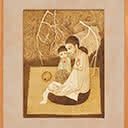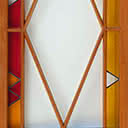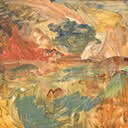Mothers Children
40 x 29.5 cm
est. $80,000 - 120,000
PROVENANCE
Private Collection, Auckland
Acquired from Rick House of Ceramic and Arts,
Singapore, original label affixed verso
Regarded as a leading figure within Singapore's art history, Cheong Soo Pieng is known for his distinctive style, which stemmed from a profound understanding of easel painting and Chinese aesthetics. A pioneer of the Nanyang art style and a key figure in Singapore modern art scene, Cheong Soo Pieng established a unique and wide-ranging repertoire of styles and mediums. The landmark Bali trip in 1952 that inspired Cheong Soo Pieng (and 3 other pioneer artists, Chen Wen Hsi, Chen Chong Swee and Liu Kang) to reinvent groundbreaking pictorial modes culminating to the Nanyang art style has been celebrated as a 'watershed' moment in the development of Singapore modern art scene. Marrying pictorial techniques of European Modern Art styles such as Fauvism and Cubism with Southeast Asian themes, some distinct features of Nanyang style include a bold colour palette, a cubist treatment and the use of black outlines to accentuate planes and objects. A life-changing sojourn in Europe from 1961 to 1963 broadened Soo Pieng's perspectives and gravitated his experimentation towards abstraction and the mixed media. Successful exhibitions during his time in Europe, including solo shows at the Frost & Reed Gallery (London), Redfern Gallery (London) and Galerie Schoninger (Munich). The late 1970s saw a return to Soo Pieng's earlier practice, focusing on Southeast Asian subjects particularly of Malaya, Sarawak and Bali. Soo Pieng stylised these figures by depicting them with long exaggerated limbs and almond-shaped eyes, drawing influence from both wayang kulit puppets and modernist artists such as Amedeo Modigliani and Alberto Giacometti. This was to become Soo Pieng's most emblematic series. An increasingly reflexive Soo Pieng played with the ways of seeing embedded within the oil and ink traditions. In his oil paintings, Soo Pieng used a variety of framing features to form pictures within pictures, emphasising the multi-varied lenses through which the Southeast Asian subjects had been viewed over the years. With inks, he localised the ink tradition by creating Nanyang scrolls, complete with indigenous material culture and grounded his identity as a diasporic Chinese artist. Cheong Soo Pieng is internationally recognised as one of Singapore's most important pioneering artists, one who perhaps most successfully blended together the various art traditions that converged in this region.

